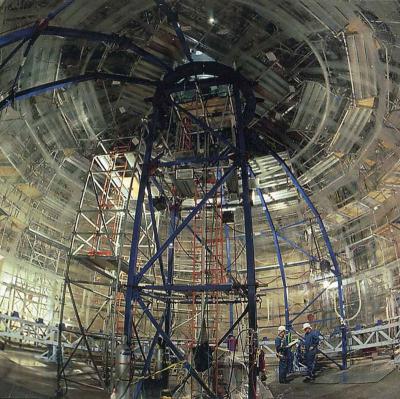Reynolds Polymer Technology engineered, manufactured, and installed the SNO vessel in collaboration with Dr. MacDonald and his team

Grand Junction, CO. October 09, 2015 – What is invisible to all but has been observed to change shape? A neutrino does just that according to research conducted by Dr. Arthur MacDonald at SNO Lab in Ontario, Canada. He and his team were among the first to observe that solar neutrinos, elementary particles most often created by nuclear reactions, can change identities. This metamorphosis requires neutrinos to have mass, a realization that has fit neutrinos into theories of fundamental physics and thus the way we understand the universe. The latter can also be said of SNO Lab itself.
“We are very proud to have been a contributor to this project,” said Scott Sullivan, president of Reynolds Polymer Technology. “We at RPT offer congratulations to Dr. MacDonald on being recognized for his contributions to science.”
The complex detector that is central to SNO lab is quietly located 6,800 feet below the surface. The vessel itself, an imposing acrylic sphere with a 40-foot diameter and four-inch thick walls, contains 1,100 tons of a heavy water that is conducive to detecting particles. What’s more, the cavity around the vessel itself is filled with normal water, putting additional pressure on the acrylic sphere. These are the factors that Reynolds Polymer engineers had to keep in mind when designing and manufacturing the invaluable vessel.
Installation of the vessel at SNO had to be done in sections and took nearly a year. Each piece (74,000 pounds in total) of acrylic, after making the 1,800 mile journey from Grand Junction, CO to the site in Sudbury, Ontario, had to be transported over a mile underground to the research cavity. The worksite was then a further horizontal mile into the subterranean landscape and inside a clean room environment. After decontamination, each piece of acrylic had to be bonded onsite. A remarkable 1,550 feet of chemical bonds were needed to complete the project.
Dr. MacDonald will receive the official award, along with Dr. Takaaki Kajita of Japan, at the official ceremony this December. The Royal Swedish Academy of Sciences chooses winners once a year to those it judges to have made the most outstanding contributions to mankind in the field of physics.

